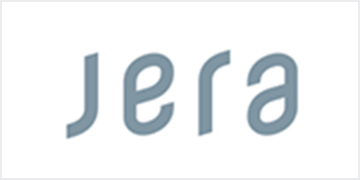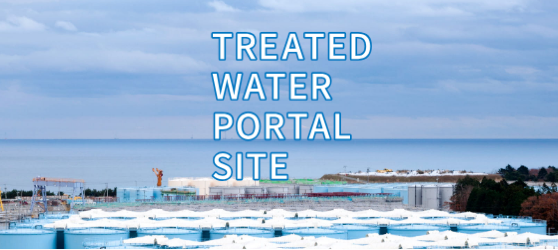SASB Standards
Return to ESG Related Information Disclosure
| Topic | Code | Accounting Metric | Category | Unit of Measure | Remark | |||
|---|---|---|---|---|---|---|---|---|
| Environment | ||||||||
| FY2021 | FY2022 | FY2023 | ||||||
| Greenhouse Gas Emissions & Energy Resource Planning | IF-EU-110a.1 | (1) Gross global Scope 1 emissions | Quantitative | t-CO2 | 203,000 | 205,000 | 211,000 | |
| (2) Percentage covered under emissions-limiting regulations | Quantitative | % | 0 | 0 | 0 | There is no “regulated market” in Japan. | ||
| (3) Percentage covered under emissions-reporting regulations | Quantitative | % | 95 | 95 | 96 | Emissions-reporting regulations indicate reports of greenhouse gas (CO2, N2O, SF6, HFCs) emissions based on the Act on Promotion of Global Warming Countermeasures. | ||
| IF-EU-110a.2 |
Greenhouse gas (GHG) emissions associated with power deliveries (Basic emissions) |
Quantitative | t-CO2 | 86,100,000 | 81,700,000 | 91,300,000 | Adjusted emissions indicate the amount of CO2 emissions after reflecting adjustments related to the renewable energy feed-in tariff system based on the Act on Promotion of Global Warming Countermeasures. | |
|
Greenhouse gas (GHG) emissions associated with power deliveries (Adjusted emissions) |
Quantitative | t-CO2 | 84,900,000 | 67,500,000 | 78,400,000 | |||
| IF-EU-110a.3 | Discussion of long-term and short-term strategy or plan to manage Scope 1 emissions, emissions reduction targets, and an analysis of performance against those targets | Discussion and Analysis | - |
Since the TEPCO Group transferred its fuel and thermal power operations to JERA in April 2019, scope 1 emissions are extremely low, at 211,000 t-CO2. On the other hand, electric power retailers are required to calculate and report greenhouse gas emissions at the retail stage, which are major part of Scope 3 emissions, in accordance with the "Act on Promotion of Global Warming Countermeasures". For this reason, the TEPCO Group has set a target of reducing CO2 emissions from retail electricity sales by 50% by fiscal 2030 (compared to fiscal 2013). CO2 emissions were 139.2 million tons in fiscal 2013, and were reduced to 78.4 million tons in fiscal 2023. * Figures for FY2023 are preliminary figures. |
||||
| Air Quality | IF-EU-120a.1 | (1) Air emissions of NOx (excluding N2O) | Quantitative | t | 2,000 | 2,000 | 2,000 | |
| Percentage of NOx (excluding N2O) in or near areas of dense population | Quantitative | % | 100 | 100 | 100 | |||
| (2) Air emissions of SOx | Quantitative | t | <1,000 | <1,000 | <1,000 | |||
| Percentage of SOx in or near areas of dense population | Quantitative | % | 100 | 100 | 100 | |||
| (3) Air emissions of particulate matter (PM10) | Quantitative | t | Not disclosed | Not disclosed because the measurement method recommended by SASB Standards is not followed. | ||||
| (4) Air emissions of lead (Pb) | Quantitative | t | Not applicable | Since FY2019, there have been no emission facilities that fall under the Air Pollution Control Law. | ||||
| (5) Air emissions of mercury (Hg) | Quantitative | t | Not applicable | |||||
| Water Management | IF-EU-140a.1 | (1) Total water withdrawn | Quantitative | 1000m3 | 52,787,101 | 50,621,370 | 41,352,728 | |
| Percentage of total water withdrawn in regions with High or Extremely High Baseline Water Stress | Quantitative | % | 0 | 0 | 0 | |||
| (2) Total water consumed | Quantitative | 1000m3 | <1 | <1 | 3 | |||
| Percentage of total water consumed in regions with High or Extremely High Baseline Water Stress | Quantitative | % | 0 | 0 | 0 | |||
| IF-EU-140a.2 | Number of incidents of non-compliance associated with water quality permits, standards, and regulations | Quantitative | Number | 0 | 0 | 0 | ||
| IF-EU-140a.3 | Description of water management risks and discussion of strategies and practices to mitigate those risks | Discussion and Analysis | - |
The TEPCO Group operates hydroelectric power plants in more than 200 locations in Honshu, Japan, and the amount of power generation accounts for about 98% of the total. The use of water resources is essential for a clean hydroelectric power generation business that does not emit CO2 during power generation, and the following risk management is carried out. At dams and downstream of embankments at hydroelectric power plants, the water necessary to maintain the environment of the river is discharged, and the amount of water withdrawn from the river for power generation complies with the amount of water intake permitted by law. In addition, when river flooding due to heavy rain is expected, water will be discharged in advance from the dam based on the flood control agreement with the national government, and it plays an important role in reducing heavy rain damage in regional disaster prevention. The results of verifying water stress in the area where our facility is located by using “WRI Aqueduct Water Risk Atlas” tool to identify water risk are as follows. According to the "Baseline Water Stress", water stress is "Medium-high" at the maximum in the business area of the TEPCO Group. So there are no facilities such as hydroelectric power plants in water-stressed areas, and it is assumed that the frequency of water-related risks such as drought is low. In "Future Water Stress", there is a suggestion that water stress may not change a lot. However, with reference to this result, we will carry out risk assessment based on the actual water usage conditions at specific rivers and basins, as well as at power plants locations, and will continue to strive for risk management. In the future, we will consider long-term strategies regarding the impact of physical risks on our facilities such as floods due to climate change. |
||||
| Coal Ash Management | IF-EU-150a.1 | Amount of coal combustion residuals (CCPs) generated | Quantitative | t | 0 | 0 | 0 | |
| Percentage of coal combustion residuals (CCPs) recycled | Quantitative | % | - | - | - | |||
| IF-EU-150a.3 | Description of coal combustion products (CCPs) management policies and procedures for active and inactive operations | Discussions and Analysis | - | Our business operations do not generate any coal combustion products (CCPs). | ||||
| Social Capital | ||||||||
| Energy Affordability | IF-EU-240a.1 | (1) Average retail electric rate for residential customers (per 1kWh) | Quantitative | JPY | 27.44 | 31.95 | 27.3 | Based on the rate unit of TEPCO Energy Partner |
| (2) Average retail electric rate for commercial customers (per 1kWh) | Quantitative | JPY | 20.45 | 28.72 | 23.93 | We calculate (2) and (3) from contract types with a large number of contracts. Based on the rate unit of TEPCO Energy Partner | ||
| (3) Average retail electric rate for industrial customers (per 1kWh) | Quantitative | JPY | ||||||
| IF-EU-240a.3 | (1) Number of residential customer electric disconnections for non-payment | Quantitative | Number | 478,471 | 242,977 | 291,736 | The number of contract terminations with TEPCO Energy Partner due to non-payment of electricity charges (excluding the number of supply suspensions based on the general provisions for specified retail service). | |
| (2) Percentage reconnected within 30 days | Quantitative | % | No results | It is stipulated that if the payment is not made even after the due date, the supply and demand contract will be canceled (contract canceled) based on the Terms and Conditions. Shown as "No results" since supply suspension and resumption are not stipulated in the Terms and Conditions. |
||||
| IF-EU-240a.4 | Discussion of impact of external factors on customer affordability of electricity, including the economic conditions of the service territory | Discussion and Analysis | - | In Japan, the Electricity Business Act stipulates that "a general electricity transmission and distribution utility must not refuse to provide a wheeling service in its service area without justifiable grounds." When an application for electricity supply is received within the service area of TEPCO Power Grid, we generally provide supply to the requested location. We recognize that there is no disparity in the opportunity for consumers to obtain affordable energy, and thus there are no areas without electricity within our service area. Furthermore, we recognize that the indicators impacting electricity rates include renewable energy charge related to national policies and fuel adjustment costs that reflect fluctuations in the price of thermal power fuels. | ||||
| Human Capital | ||||||||
| Workforce Health & Safety | IF-EU-320a.1 |
(1) Total recordable incident rate (TRIR) <Employees> (per 200,000 hours) |
Quantitative | % | 0.02 | 0.04 | 0.05 | The incidents in these indicators refer to lost-time injuries, excluding non-lost-time injuries. |
|
Total recordable incident rate (TRIR) <Contractor/Consignors> (per 200,000 hours) |
Quantitative | % | 0.09 | 0.13 | 0.12 | |||
| (2) Fatality rate <Employees> (per 200,000 hours) | Quantitative | % | 0 | 0 | 0 | |||
| Fatality rate <Contractor/Consignors> (per 200,000 hours) | Quantitative | % | 0.01 | 0.01 | 0 | |||
|
(3) Near miss frequency rate (NMFR) <Employees> (per 200,000 hours) |
Quantitative | % | 0.03 | 0.09 | 0.06 | |||
|
Near miss frequency rate (NMFR) <Contractor/Consignors> (per 200,000 hours) |
Quantitative | % | 0.14 | 0.19 | 0.22 | |||
| Business-Model & Innovation | ||||||||
| End-Use Efficiency & Demand | IF-EU-420a.2 | Percentage of electric load served by smart grid technology | Quantitative | % | (1) 100[%] | (1) 100[%] | (1) 100[%] | (1) The rate of smart meters installed in all service areas of the TEPCO Power Grid (2) The number of smart meters installed in all service areas of the TEPCO Power Grid * Since the installation has been completed in all households except for some places where replacement work is difficult, the values for FY2020 are listed after FY2021. |
| (2) 28.40 mil. | (2) 28.40 mil. | (2) 28.40 mil. | ||||||
| IF-EU-420a.3 | Customer electricity savings from efficiency measures, by market | Quantitative | MWh | The number of customers to whom the TEPCO Energy Partner offers electrification and energy-saving solution proposals: Approx. 750 companies, and over 39,000 households. Energy saving services introduced through online services: 12,022,552 (number of website registered members) |
As an alternative quantitative metric for reduced electricity consumption, we disclose the number of electrification and energy-saving solution proposals by TEPCO Energy Partner, as well as the number of energy saving services introduced through online services. * TEPCO Energy Partner provides various solutions electrification and energy saving solutions to customers.(cf. https://www.tepco.co.jp/ep/solution/) (Japanese only) * Free online services offered by TEPCO Energy Partner, such as Denki-Kakei-Bo, Kurashi TEPCO, and Business TEPCO that provide useful information to customers, such as how to use graph comparisons of monthly electricity charges and usage. |
|||
| Leadership & Governance | ||||||||
| Nuclear Safety & Emergency Management | IF-EU-540a.1 | Total number of nuclear power units | Quantitative | Number | 17 Units (Fukushima Daiichi: 6 Units, Fukusima Daini: 4 Units, Kashiwazaki-Kariwa: 7 Units) | * All units at Fukushima Daiichi are decommissioning. The decision has been made to decommission all units at Fukushima Daini. All units at Kashiwazaki-Kariwa have been shut down. * The Kashiwazaki-Kariwa Nuclear Power Station is conducting safety measures and integrity checks. |
||
| IF-EU-540a.2 | Description of efforts to manage nuclear safety and emergency preparedness | Discussion and Analysis | - | For the governance of our nuclear operations, monitoring and auditing are conducted by the Board of Directors and the Audit Committee, alongside audits by the Internal Audit Office. Additionally, an independent organization, the Nuclear Safety Oversight Office, monitors activities separate from the Nuclear Power and Decommissioning Division. To further enhance the monitoring of physical protection, we have established the Physical Protection Monitoring Office, which reports directly to the President. Moreover, the Nuclear Reform Monitoring Committee, an advisory body to the Board of Directors composed of domestic and international experts, oversees and supervises our nuclear operations from an external perspective. | ||||
| Grid Resiliency | IF-EU-550a.1 | Number of incidents of non-compliance with physical or cybersecurity standards or regulations | Quantitative | Number | Not disclosed | We do not disclose the results in light of the risks of cyber attackes that may be caused by dislclosing the results. | ||
| IF-EU-550a.2 | (1) System Average Interruption Duration Index (SAIDI), inclusive of major event days | Quantitative | Minutes | 7 | 5 | 5 | ||
| IF-EU-550a.2 | (2) System Average Interruption Frequency Index (SAIFI), inclusive of major event days | Quantitative | Times | 0.11 | 0.13 | 0.07 | ||
| IF-EU-550a.2 | (3) Customer Average Interruption Duration Index (CAIDI), inclusive of major event days | Quantitative | Minutes | 63.64 | 38.46 | 71.43 | ||
| Activity Metrics | ||||||||
| Code | Activity Metric | Category | Unit of Measure | FY2021 | FY2022 | FY2023 | Response | |
| IF-EU-000.A | (1) Number of residential customers served | Quantitative | Number | 14,879,000 | 14,703,000 | 14,801,000 | Total of TEPCO EP consolidated (EP/TCS/PinT) | |
| (2) Number of commercial customers served | Quantitative | Number | 185,000 | 182,000 | 190,000 | Total of (2) and (3) Total of TEPCO EP consolidated (EP/TCS/PinT) |
||
| (3) Number of industrial customers served | Quantitative | Number | ||||||
| Reference:Number of contracts for low-pressure supply contracts excluding household use | Quantitative | Number | 7,300,000 | 7,346,000 | 7,393,000 | Total of TEPCO EP consolidated (EP/TCS/PinT) | ||
| IF-EU-000.B | (1) Total electricity delivered to residential customers | Quantitative | MWh | 65,267,000 | 61,653,000 | 61,173,000 | Total of TEPCO EP consolidated (EP/TCS/PinT) | |
| (2) Total electricity delivered to commercial customers | Quantitative | MWh | 116,103,000 | 111,692,000 | 127,061,000 |
Total of (2) and (3) Total of TEPCO EP consolidated (EP/TCS/PinT) |
||
| (3) Total electricity delivered to industrial customers | Quantitative | MWh | ||||||
| (4) Total electricity delivered to all other retail customers | Quantitative | MWh | 4,904,000 | 4,927,000 | 5,151,000 | low voltage supply contracts excluding household use Total of TEPCO EP consolidated (EP/TCS/PinT) |
||
| (5) Total electricity delivered to wholesale customers | Quantitative | MWh | 47,318,000 | 57,959,000 | 32,519,000 | Total (excluding indirect auctions) of TEPCO EP consolidated (EP/TCS/PinT), TEPCO PG (including inter-regional), and TEPCO RP consolidated (RP/Tokyo Electric Generation) | ||
| IF-EU-000.C | Length of transmission lines <Overhead> | Quantitative | km | 28,453 | 28,480 | 28,410 | ||
| Length of transmission lines <Underground> | Quantitative | km | 12,513 | 12,557 | 12,589 | |||
| Length of distribution lines <Overhead> | Quantitative | km | 344,208 | 345,095 | 345,883 | |||
| Length of distribution lines <Underground> | Quantitative | km | 39,207 | 39,449 | 39,741 | |||
| IF-EU-000.D | Total electricity generated | Quantitative | MWh | 13,698,000 | 12,248,000 | 11,225,000 | ||
| Percentage by major energy source <coal> | Quantitative | % | 0 | 0 | 0 | |||
| Percentage by major energy source <natural gas> | Quantitative | % | 0 | 0 | 0 | |||
| Percentage by major energy source <nuclear> | Quantitative | % | 0 | 0 | 0 | |||
| Percentage by major energy source <petroleum> | Quantitative | % | 1 | 1 | 1 | |||
| Percentage by major energy source <hydropower> | Quantitative | % | 98 | 98 | 98 | |||
| Percentage by major energy source <solar> | Quantitative | % | 0.2 | 0.2 | 0.2 | |||
| Percentage by major energy source <wind> | Quantitative | % | 0.3 | 0.3 | 0.3 | |||
| Percentage by major energy source <other renewables> | Quantitative | % | 0.1 | 0.1 | 0.2 | |||
| Percentage by major energy source <other gases> | Quantitative | % | 0 | 0 | 0 | |||
| Percentage in regulated markets | Quantitative | MWh, % | Not applicable | There is no “regulated market” in Japan. | ||||
| IF-EU-000.E | Total wholesale electricity purchased | Quantitative | MWh | Not disclosed | Not disclosed due to competition through electricity market liberalization. | |||
Inquiries
[ ESG Office ]
Tokyo Electric Power Company Holdings, Inc.
1-1-3 Uchisaiwai-cho, Chiyoda-ku, Tokyo 100-8560, Japan
Tel: +81-3-6373-1111
E-mail: admin-esg@tepco.co.jp
















